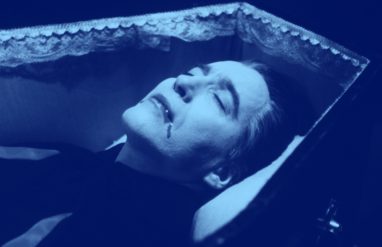“See Spot. See Spot run. Run, Spot, run!” It’s easy to think children’s book authors always minimize the difficulty of vocabulary words to suit their young audiences. That’s certainly the case for easy-reader board books, like the classic See Spot Run, a go-to for youngest readers.
But, some authors of classic children’s literature refuse to dumb down their language for their readers, no matter the age. A simple zoo becomes a menagerie in The Wizard of Oz, and geese in Charlotte’s Web aren’t merely talkative but garrulous (playing up the giddy G alliteration). We’ll get to the full list of these verbose books soon, but first…
Is a big vocabulary beneficial in children’s books?
We already know that kids who are read to regularly are exposed to more language. In one study, researchers found that children who are read five books a day throughout early childhood enter kindergarten having heard about 1.4 million more words than other kids.
And there are bonuses to some of these words being longer and more complex. Using challenging vocabulary words in children’s literature is beneficial in terms of reading and speech development. But—big but—it requires a deft and delicate hand.
When dense vocabulary is applied too thickly, the story can become overly taxing to read and understand. The trick is balancing big vocabulary words with context clues and easier-to-read language that helps challenge kids while still allowing them to read fluently and enjoy the story. And that leads us to this list of beloved books that challenge (and entertain) children with vocabulary.
Which children’s books (flawlessly) include big vocab words?
1. A Wrinkle in Time (bilious)
“The startled children looked into a great entrance hall of dull, greeny marble. Marble benches lined three of the walls. People were sitting there like statues. The green of the marble reflecting on their faces made them look bilious.” —A Wrinkle in Time, by Madeleine L’Engle
After the trio of main characters enter the wrinkle in L’Engle’s A Wrinkle in Time, they find themselves in a “greeny marble” hall with creepy statue-like people sitting all around. Here, bilious relates to bile, a yucky yellow-green substance secreted by the liver. L’Engle’s word choice is powerful and intentional because it evokes just how sick everyone looks (and probably feels) and contributes to a sense of foreboding.
2. Matilda (skullduggery)
“Both Matilda and Lavender were enthralled. It was quite clear to them that they were at this moment standing in the presence of a master. Here was somebody who had brought the art of skullduggery to the highest point of perfection, somebody, moreover, who was willing to risk life and limb in pursuit of her calling.” —Matilda, by Roald Dahl
Matilda and Lavender are two kids being terrorized by their horrible principal. So, when they meet Hortensia, who has a long history of playing tricks on said awful principal, it’s a bit like meeting your favorite rockstar. Skullduggery means dishonorable proceedings or mean dishonesty and trickery, which is typically not something to celebrate, but these bold kids are uniting against a common enemy. Context makes all the difference.
3. The Word Collector (vociferous)
“Aromatic. Vociferous. Effervescent. There were words he did not know the meaning of at first, but they were magnificent.” —The Word Collector, by Peter H. Reynolds
The Word Collector is about a little boy who does just that: he collects words. Big ones, small ones, new ones, old ones. The book provides dozens of opportunities to explore new vocabulary with kids, but one of the more SAT-level inclusions is vociferous. This advanced word, which means “crying out noisily,” is easy for kids to understand once they know what it means and will be a memorable (and impressive!) addition to their vocabulary long after reading.
4. Dorothy and the Wizard in Oz (menagerie)
“‘Your friends sound like a menagerie,’ remarked Zeb, uneasily. ‘Couldn’t you wish me in some safer place than Oz?’” —Dorothy and the Wizard in Oz, by L. Frank Baum
This challenging word shows up in L. Frank Baum’s fourth installment of The Wizard of Oz series. Strange vegetable creatures called Mangaboos are preparing to throw Dorothy and co. into the compost pile of death when the great Wizard of Oz descends in his balloon and saves the day with his lexicon. Stalling for time, Oz describes his menagerie, which is a “collection of wild or unusual animals,” like a zoo.
Maybe it’s the length of time it takes to say menagerie instead of zoo, but Oz, through lofty language, is able to buy time and convince the Sorcerer of the Mangaboos not to compost his friends.
5 and 6. Charlotte’s Web (garrulous)
“It was the best place to be, thought Wilbur, this warm delicious cellar, with the garrulous geese, the changing seasons, the heat of the sun, the passage of swallows, the nearness of rats, the sameness of sheep, the love of spiders, the smell of manure, and the glory of everything.” —Charlotte’s Web, by E.B. White
E.B. White’s word choice in Charlotte’s Web paints a fuller picture of farm life, which sets an idyllic scene for readers. Garrulous, or talkative, geese are just a few of Wilbur’s many friends who make life worth living—living!—on the farm. This word also provides an opportunity to teach kids about alliteration, a literary device in which two or more words with the same stressed syllables follow one another, as in “garrulous geese.”
(provender)
“At four would come supper. Skim milk, provender, leftover sandwich from Lurvy’s lunchbox, prune skins, a morsel of this, a bit of that, fried potatoes, marmalade drippings, a little more of this, a little more of that, a piece of baked apple, a scrap of upside-down cake.” —Charlotte’s Web, by E.B. White
No surprise—we have a second choice from Charlotte’s Web. Here we turn to the main character, Wilbur, a sweet, grateful pig, who is satisfied with his daily provender, or “food for livestock.” Typically, provender consists of dry food, like hay or oats. In Wilbur’s case, said provender is mixed with quite a bit more. He is a beloved pet pig, after all, and provender is thought to have an association with the Latin prōvidēre, meaning “to look out for, provide.” All that marmalade and upside-down cake is just a way of providing the best for dear Wilbur.
7. The Phantom Tollbooth (quagmire)
“Finally he chose three [words] which looked particularly good to him—’quagmire,’ ‘flabbergast,’ and ‘upholstery.’ He had no idea what they meant, but they looked very grand and elegant.” —The Phantom Tollbooth, by Norton Juster
Norton Juster’s Phantom Tollbooth tells the adventures of Milo, who finds a mysterious tollbooth one day and decides to drive his toy car through it, only to find himself in the “Kingdom of Wisdom.” Milo enters the capital city of Dictionopolos (our literal dreamland), and comes across a “wonderful assortment of words for sale.” Hoping to learn how to use the words after he buys them, Milo picks quagmire and flabbergast, difficult words that mean “bog” or “dilemma” and “overcome with surprise.”
8. The Velveteen Rabbit (bracken)
“He took the Velveteen Rabbit with him, and before he wandered off to pick flowers, or play at brigands among the trees, he always made the Rabbit a little nest somewhere among the bracken, where he would be quite cozy, for he was a kind-hearted little boy and he liked Bunny to be comfortable.” —The Velveteen Rabbit, by Margery Williams
Even The Velveteen Rabbit has a few larger words up its velveteen sleeve. In a passage describing how the main character goes to play in the woods during summertime and always brings his rabbit friend along, author Margery Williams uses bracken, an unfamiliar term for most kids and even some adults. Luckily, this word isn’t as difficult as it seems. It means “a cluster of ferns or shrubs.”
9. Lafcadio: The Lion Who Shot Back (gabardine)
“‘How about a lovely blue gabardine suit?’ said the tailor’s assistant. ‘How about a beautiful purple and yellow suit with red polka dots and a vest to match?’” —Lafcadio: The Lion Who Shot Back, by Shel Silverstein
Narrated by “Uncle Shelby” (obviously Silverstein), Lafcadio is about a lion named “Ruggrrg or Grmmff or Grrrrr” who learns to use a rifle and shoot at hunters who come after him. Grmmff is eventually discovered by a circus man and joins the circus, changing his name to Lafcadio. He becomes rich and famous and can afford outfitting himself in the finest gabardine suits. Silverstein chooses this melodic big word because it describes the “firm, tightly woven fabric” that comprises Lafcadio’s fancy duds. It’s gabardine or go home.
10. The Porcupine Year (malevolent)
“This time, the rapids sent them through a dark tunnel that seemed timeless, blind, malevolent. A yawning throat of water.” —The Porcupine Year, by Louise Erdrich
Louise Erdrich captures the feeling of danger in this scene in her novel from The Birchbark House series. The main character, Omakayas, is canoeing on the river with her younger brother, Pinch, when trouble strikes. The water turns to rapids, and as they struggle to escape, the water itself seems malevolent, like it wishes evil or harm to others. With this word choice, readers can feel how the danger seems threatening and immediate.
Say what?! We’ll help you pronounce these 14 words you learned in books.
11. Blended (arpeggio)
“The music slips out and shines like gold. I’m a tiger running through the jungle, strong and powerful. I’m a panther, dark and mysterious. I am so strong. I am in complete control of this world. Chords. Arpeggios. Cadenzas.” —Blended, by Sharon M. Draper
In Blended, Sharon M. Draper tackles themes related to divorce, multi-race families, and racial inequality through musical prose that engages and challenges young readers. Her 11-year-old main character, Isabella, escapes from the stresses of her life by playing music on the piano. In this passage, she gets lost in the arpeggio, or the sounding of notes and chords played in rapid succession, as her passion for music transports her to another world.
12. The Lion, the Witch, and the Wardrobe (stratagem)
“‘Couldn’t we have some stratagem?’ said Peter. ‘I mean couldn’t we dress up as something, or pretend to be—oh, peddlers or anything—or watch till she was gone out—or—oh, hang it all, there must be some way.’” —The Lion, the Witch, and the Wardrobe, by C.S. Lewis
This C.S. Lewis fairy tale about a magical wardrobe that transports four siblings to the world of Narnia offers both escape and a masterclass in useful vocabulary words. The siblings are forced into a fight between good and evil, one that involves cunning, and yes, a bit of stratagem. A stratagem is a plan, scheme, or trick for deceiving an enemy. It comes from the Italian word stratagemma, or “war ruse,” driving home the significance of the siblings’ battle against the feared White Witch.
13. The Tale of Despereaux (portentous)
“Reader, if you will pardon me, we must pause for a moment to consider a great and unusual thing, a portentous thing. That portentous thing is this: Roscuro’s voice was pitched perfectly to make its way through the torturous path of Mig’s broken-down cauliflower ears.” —The Tale of Despereaux, by Kate DiCamillo
In Kate DiCamillo’s tale about a small mouse who’s capable of performing mighty deeds, she uses vocabulary words that show she believes young readers are capable of mightiness, too. Portentous means “marvelous, amazing, prodigious.” It’s used to indicate significance, as it does here when DiCamillo pauses the story itself to ensure readers grasp the significance of Mig, a character with damaged hearing who dreams of being a princess, being able to hear Roscuro’s plan to finally make her dream come true.
14. The Incorrigible Children of Ashton Place (tableau)
“Imagine: A studious-looking girl of fifteen, primly dressed, perched on a large, battered trunk and reading a well-thumbed volume of obscure poetry—what tableau could more perfectly match what any reasonable person might expect a young governess to look like?” —The Incorrigible Children of Ashton Place, by Maryrose Wood
Maryrose Wood’s charming series is practically a vocabulary lesson for kids, and it’s evident from the very first pages. As we meet the governess who will narrate the rest of the story, Wood paints a tableau, meaning “a picture or scene,” of who this character is. The choice to use the word tableau, a word borrowed from French, over one more recognizable to early English readers is indicative of the author’s unique style and faith that her young audience is every bit as intelligent, interesting, and capable as the children she writes about.
Take the quiz
You can test your knowledge of these big words from children’s books with our quiz here. Or, for extra practice check out our memorable and tough words from children’s books word list.














